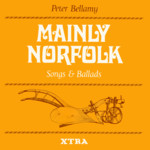> Folk Music > Songs > The Lambton Worm
The Lambton Worm
[
Roud 2337
; Ballad Index PBB104
; DT LAMDWORM
; Mudcat 5469
; C.M. Leumaine]
Roy Palmer: Everyman’s Book of British Ballads
Roy Palmer printed The Lambton Worm in his 1980 book Everyman’s Book of British Ballads. He noted:
In the Middle Ages the Lambtons lived in a castle near the village of Penshaw in County Durham. The story goes that the young heir caught a strange-looking worm in the River Wear and threw it in a well. During Lamhton’s long absence on a crusade in the Holy Land the worm grew to a tremendous size and terrorized the whole district. Attempts to kill it failed because whenever the monster was cut in two, the halves joined together again. On his return home, acting on the advice of a witch, Lambton succeeded in killing the worm by covering his armour with razors and standing in the river. When the worm wrapped itself round him it was cut into pieces, which were carried away by the current and prevented from joining up again. The price of the witch’s advice was a promise that Lambton would kill the first creature to meet him after the battle. He had arranged that his father should release a dog, but the old man forgot to do so, and rushed out himself. Naturally, Lambton refused to kill him, but in so doing incurred the witch‘s curse that his successors would die violently—which seems to have come true. The song, originally composed in the 1860s, treats the story in jocular fashion, and omits the curse. It is still popular in the north-east.
The Union Folk sang The Lambton Worm in 1969 on their Traditional Sound album A Basketful of Oysters.
Hedgehog Pie sang The Lambton Worm as the title track of their 1970 EP The Wonderful Legend of the Lambton Worm.
The High Level Ranters sang The Lambton Worm in 1970 on their Trailer album of Tyneside songs, Keep Your Feet Still Geordie Hinnie. Johnny Handle noted:
From County Durham, popular after it was used in a pantomime in 1867. The legend survives.
The Marsrden Rattlers sang The Lambton Worm in 1971 on the BBC Folk on 2 anthology Northumbrian Folk. The sleeve notes commented:
Although this song was first performed in 1867 in a pantomime at The Tyne Theatre, the legend of the Lambton Worm goes back many hundreds of years. In ancient Norse the word Orme or Worme is the generic name for serpent. There is a Worm Hill near Fatfield—about 1 ½ miles from Old Lambton Hall, and Worm Well once lay between the hill and the River Wear. Jim Irvine leads the Marsden Rattlers in this song which closely follows the old legend.
Spriguns of Tolgus sang Lambton Worm on their 1975 album Jack With a Feather.
Lyrics
The Lambton Worm in Everyman’s Book of British Ballads
One Sunday morn young Lambton went a-fishing in the Weor;
catched a fish upon his heuk he thowt looked varry queor,
But whatn a kind o’ fish it was, young Labtom couildna tell;
He waddent fash ter tak it yairm, so he hoyed it in the well.
Chorus (after each verse):
Whisht, lads, haad yer gobs, Ah’ll tell yer all an aaful story,
Whisht, lads, haad yer gobs, Ah’ll tell yer aboot the worm.
Then Lambton felt inclined ter gan an’ fight in foreign wars,
He joined a troop o’ knights that cared for neether wounds nor scars.
So off he went to Palestine, where queor things him befel,
And varry soon forgot aboot the queor worm in the well.
This aaful worm, it graad an’ graad, it graad an aaful size,
Wi’ a greet big heed an’ a greet big gob, an’ greet big goggly eyes;
An’ when at neet it wandered oot ter pick up bits o’ news,
If it felt dry upon the road it milked a dozen coos.
This fearful beast would often feast on calves an’ lambs an’ sheep,
And swally’d bits o’ bairns alive when they lay doon ter sleep;
An’ when it’d eaten aal it could an’ it’d had its fill,
It’d craal away an’ lap its tail ten times roond Pensha Hill.
The news o’ this most aaful beast an’ its queor gannins on
Soon crossed the seas, got to the ears o’ bold and brave Sir John;
So yairm he came an’ catched the worm, an’ cut it in three halves,
Soon put a stop tiv its eatin’ bairns an’ lambs an’ sheep an’ calves.
So now yer knaa how aal the folks on both sides ot the Weor
Lost lots o’ sleep an’ lots o’ sheep, an’ lived in mortal feor;
So let’s have one ter bold Sir John who saved the bairns from harm,
Saved sheep an’ calves by makin’ halves o’ the famous Lambton Worm.
Last chorus:
Naw, lads, Ah’ll haad me gob, that’s aal Ah knaa aboot the story,
Aboot Sir John an’ his clivvor job wi’ the famous Lambton Worm.

